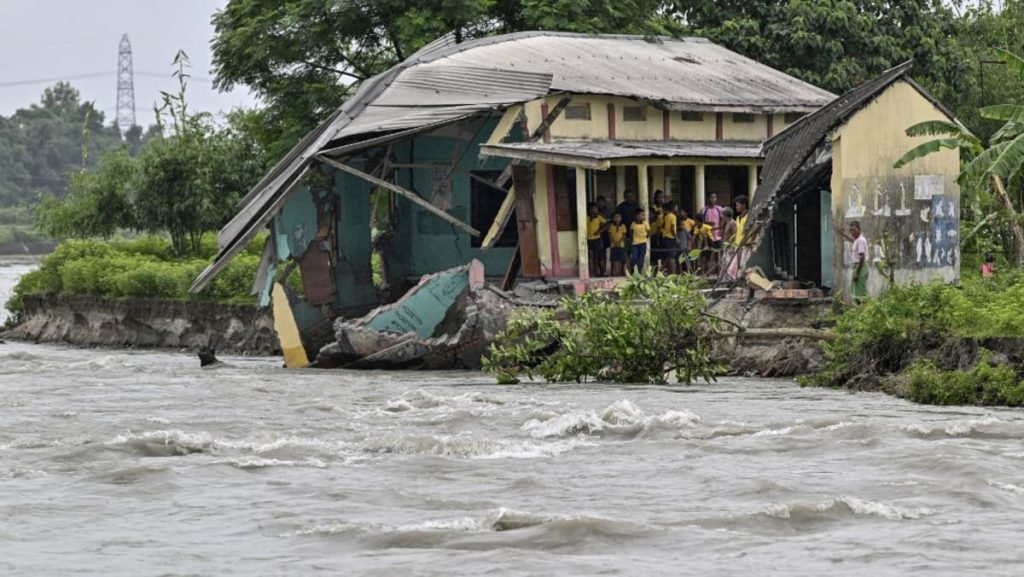Torrential storms in India and Nepal have resulted in the deaths of hundreds of people since June, including at least 171 in Nepal and multiple scores in India in just this month alone. These storms have caused widespread devastation with flooding and landslides as part of the treacherous monsoon season. Weather-related disasters during the monsoon season are common, but experts are pointing to climate change as a major factor in the increasing frequency and severity of these natural disasters.
Following a historic heatwave in May and June that saw record high temperatures in New Delhi, heavy rainstorms have now taken over, triggering flooding and landslides across India. The heatwave saw temperatures rising to 49.2 degrees Celsius, matching the capital’s previous record high from 2022. Now, the weather department in India is issuing warnings for heavy rainfall in the southern and northeastern states. The rapid shift from extreme heat to massive rainfall has led to further challenges for the affected regions.
In Himachal Pradesh state, a surge of water resulted in the drowning of nine people and the disappearance of two individuals in the Una district. Rescue teams are working to locate the missing individuals, as witnesses described the terrifying scene of a car being swept away by the strong, muddy river current. Despite efforts to stop the car, the force of the water overwhelmed them, highlighting the danger and intensity of these natural disasters that strike during the monsoon season.
The impact of the storms extends beyond just the loss of life, as flooding and landslides have caused significant damage to infrastructure, homes, and livelihoods in the affected regions. The aftermath of such disasters often requires extensive rescue and relief operations to provide assistance to those affected and help them recover from the destruction. With the increasing threat of climate change exacerbating the severity of monsoon-related disasters, there is a growing need for proactive measures to mitigate the risks and protect vulnerable communities.
As the monsoon season continues, the focus remains on monitoring weather patterns and issuing timely warnings to prevent further loss of life and damage. The combination of extreme heat followed by heavy rainfall poses a dual challenge for regions like India and Nepal, where the monsoon plays a critical role in agriculture and water resources. Enhancing preparedness and resilience to weather-related disasters is crucial for ensuring the safety and well-being of the populations that are most vulnerable to these increasingly frequent and intense storms. Collaborative efforts at the national and international levels are needed to address the impacts of climate change on weather patterns and reduce the risks posed by natural disasters during the monsoon season.













